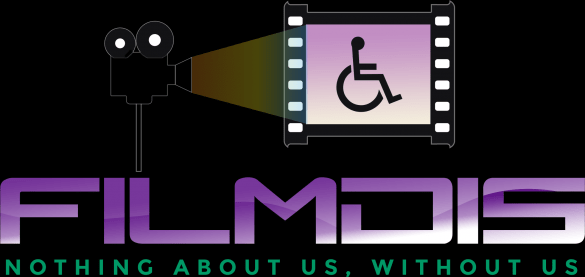The media monitoring organization, FilmDis, a company started by Dominick Evans and Ashtyn Law, disabled, queer filmmakers and activists just released its first study into disability representation! For the last year, Dominick, Ashtyn, and Chronic Loaf founder, MaeLee Johnson, watched 180 television shows. They examined shows airing between March 2018 and March 2019. The goal was to look for disability representation, in all its forms and document things like gender, gender identity, sexual orientation, race, ethnicity, nationality, age, and type of part. They also noted whether actors were actually disabled or not, to create a better idea of where inclusion is happening.
What they discovered is that out of 180 television shows, 151 of them feature some form of disabled character. There are 708 characters, total, but 406 of those are Bit parts. Only 115 or about 16% of those 708 disabled characters are Lead roles. The majority of disabled roles, not surprisingly, are actually played by white cisgender males, 261 of them to be exact. Out of that number 159 are heterosexual, 91 have unknown sexuality, 7 are gay, and 4 are bisexual.
When it comes to inclusion by race and ethnicity, Black characters are less than half the number of white characters. There are 489 white characters, 115 Black characters, and 83 IPOC characters. Additionally, there is one character from a fantasy race, played by Black actor, Peter Macon, as the alien, Bortus, on The Orville. Black females have a slight majority over Black males with 65 Black females and 60 Black males. IPOC representation includes 43 Latinx/Latin, 16 Asian, 5 Hawaiian, 5 Middle Eastern/Arab, 4 BIracial, 4 Indian, 3 First Nation/Indigenous, 1 Punjabi Muslim/Pakistani, and 2 people whose race/ethnicity is Unknown. There are also 5 Jewish characters, one of whom is a Black man.
LGBTQIA disabled representation is abysmal. Only about 5% of those 708 disabled characters are LGBTQIA. That accounts for 36 characters. There is only one trans character, and she is a Biracial, Afro-Latina woman, Blanca Evangelista on Pose. There is 1 non-binary, 1 gender-nonconforming gay man, and 1 intersex woman It’s pretty clear that television does not think that disabled people can be LGBTQIA, but the disability community knows differently.
One of the most disappointing aspects of this study is the fact that only 70 of those 708 characters are played by actually disabled people (that we know of). This is around 10% of disability representation specifically. Disabled representation is still only a small part of inclusion on television, so to have only 10% of that played by actually disabled actors, it’s clear that erasure of disabled performers is continuing to happen on a large-scale in Hollywood.
FilmDis and its founders are imploring Hollywood executives, studios, and independent filmmakers and creators to start including disabled actors, but not just as plot lines and props. Everyone becomes disabled eventually if you live long enough. Disability is a natural part of human existence. Including disabled actors and creators would go a long way towards decreasing the stigma and fear many nondisabled people have of becoming disabled themselves.
To read the full report: FilmDis White Paper on Disability Representation on Television: Examining 180 TV Shows from March 2018 to March 2019
Image Description: A variation on the original FilmDis logo. Purple to white gradient text reads “FilmDis.” Above the text is the image of an old school projector projecting an image of the wheelchair symbol on to a screen. The background of the projection screen is a purple to white gradient color. Under that is green text that reads, “nothing about us, without us”
